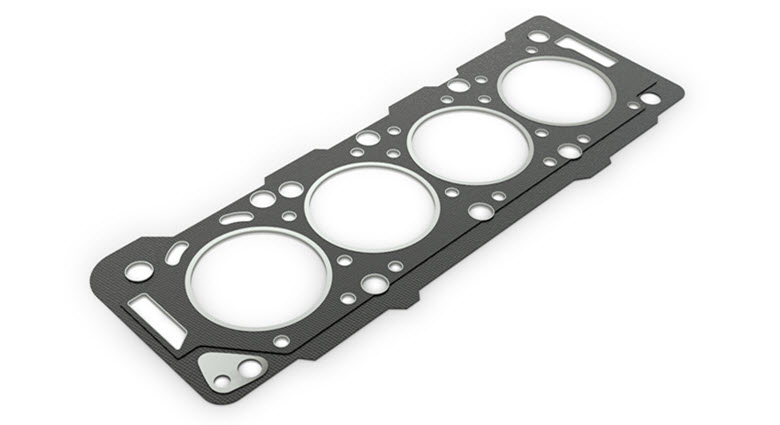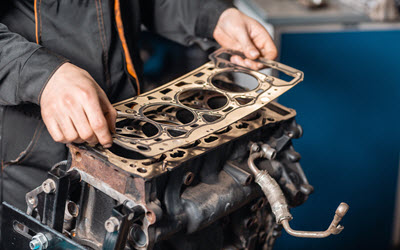Leading Repair Shop in Decatur for Replacing the Head Gasket in Mini

The head gasket is a small yet crucial component that is located between the engine block and the cylinder head. The purpose of this part is to seal in the internal combustion process and allow oil and coolant to travel throughout the engine. This process is crucial for keeping the engine cooled and lubricated. If the gasket has blown, you could end up with some major engine issues.
Most modern vehicles use a head gasket that is made from several entwined layers of a steel material that is mixed with elastomer. Older vehicles were often equipped with a gasket that was composed of graphite or asbestos. The metal gaskets are much less likely to go bad compared to older designs.
Under Your Mini’s Hood
The head gasket allows oil and coolant to circulate throughout the engine, but it also seals up the engine’s combustion chamber. This sealing function allows the engine to create the power needed to run while redirecting harmful gasses from the combustion chamber through the exhaust system.
Symptoms of a Bad Head Gasket
- Leaking oil or coolant from the seam between the cylinder head and the engine is a pretty good sign you have either a blown head gasket or a cracked block. Be sure to check for cracks or a warping cylinder head.
- Another sign of a blown head gasket could be a misfiring cylinder or a breach between two cylinders on the same head. Having a mechanic run a cylinder compression, as well as leakdown test, is a good way to determine the exact location of any leaks.
- If your vehicle is misfiring when you try to start it, and releasing white exhaust, this can also be due to a bad head gasket as there could be a leak coming from the cooling system into the cylinder.
- An overheating engine is another symptom of a blown head gasket. If you notice the temperature keeps going up and you see bubbles on the overflow tank, there’s a good chance the cylinder is leaking into the cooling system.
- Blue exhaust is also a sign of a bad head gasket, but may also be a sign of other issues such as worn-out rings, faulty stem seals, or a failing PCV system.
- If the gasket is blown and is allowing coolant to leak into your oil, you may notice an odd consistency of your oil. Coolant-contaminated oil usually appears like a froth or foam.
- On the other hand, if the oil is leaking into your coolant, you’ll notice the consistency of the coolant has turned into a thick goo that looks like mayonnaise. You’ll be most likely to spot this goo on the overflow reservoir or the on the radiator cap.
Causes of a Blown Head Gasket
The most common reason for a blown head gasket is an engine that is too hot. Engine temperatures that are too high are commonly the result of not enough circulating coolant in the radiator due to a leak.
The rate at which a gasket can fail depends a lot on the material it’s made from. Metals that have a high thermal expansion rate, such as aluminum, are very sensitive to hot temperatures. A temperature that is hotter than normal can cause the gasket to warp and change shape, reducing its effectiveness at sealing.
How to Prevent Your Head Gasket From Going Bad
The recommended way to prevent a blown head gasket is to keep an eye on your temperature gauge. If you notice your engine is running hot, check to see you have an adequate level of coolant.
Mix your coolant precisely according to the manufacturer’s instructions and check for any leaks under the car. If you notice your engine constantly running hot, you should have your vehicle inspected by an automotive technician right away to check for leaks and/or a blown head gasket.
Munich West for Your Mini
If your Mini is displaying any of the symptoms  of a head gasket problem listed in this article, you may want to bring your car to our reputable shop. Munich West provides the best automotive inspection and repair to drivers in and around the Decatur and Atlanta, GA areas. We look forward to working with you for the longevity of your Mini.
of a head gasket problem listed in this article, you may want to bring your car to our reputable shop. Munich West provides the best automotive inspection and repair to drivers in and around the Decatur and Atlanta, GA areas. We look forward to working with you for the longevity of your Mini.




